Conservation is on a fast-track to integrate AI!
AI can be used for countless applications under the Conservation umbrella…
- using deep learning for automatic filtering and classification of sensor data (from satellites, drones, radio tags/collars, camera traps, microphones, and community images and labels (such as iNaturalist), ETC!)[10][11]
- for generating predictions to aid decision making… (what is the optimal placement of my limited number of cameras? What is the best place to build natural overpasses to maximize ecosystem connectivity? Where should the park rangers patrol to stop poachers most effectively? What number of new traps is the best trade-off between budgetary constraints and ecological goals?)[10][11]
My particular focus is on birds, and in Aotearoa alone there are more AI-with-birds projects than I can reasonably fit in this presentation!
A kākā by any other beak
Dr Andrew Lensen (our professor!) and Dr Rachel Shaw are collaborating on an AI facial recognition algorithm - for kākā! As kākā periodically molt all their feathers, the algorithm is meant to analyse and label individual birds based on their beaks. The hope is to be able to track the kākā both within Zealandia and ‘outside the fence’, giving unique insights into kākā behavioral psychology such as their social cliques and how information passes through a flock[14].

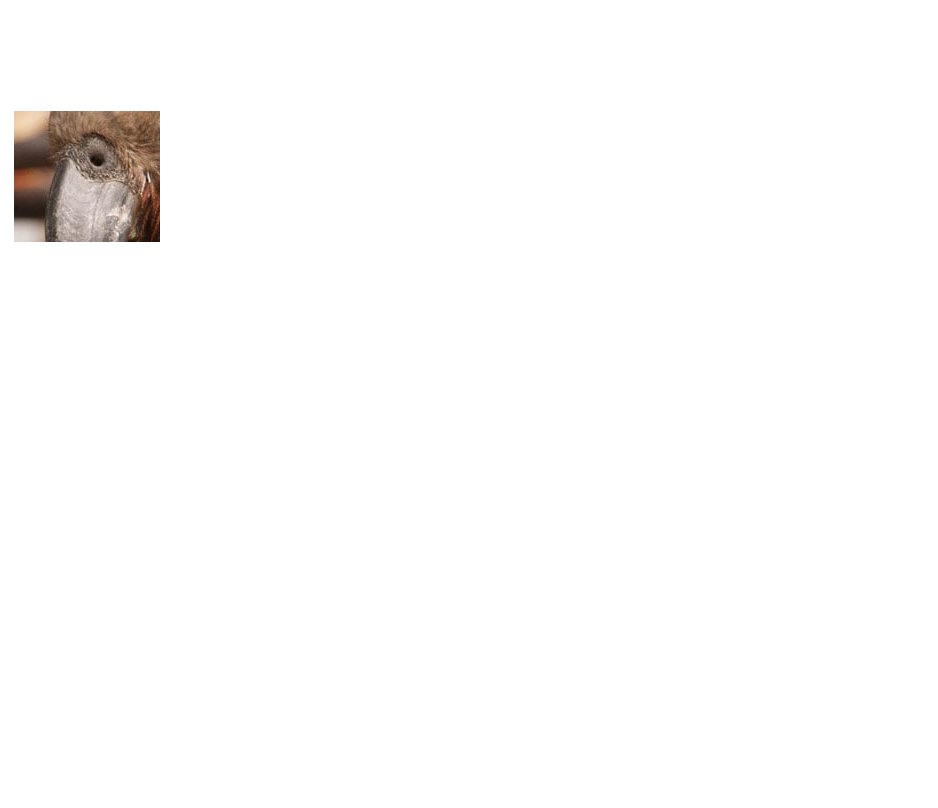
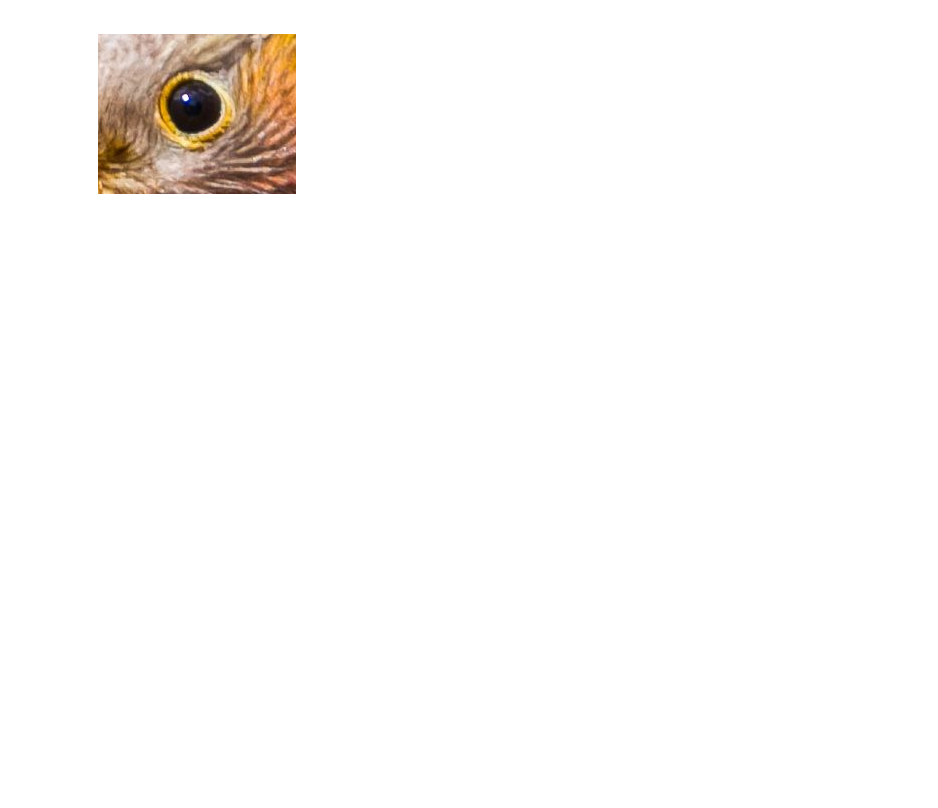


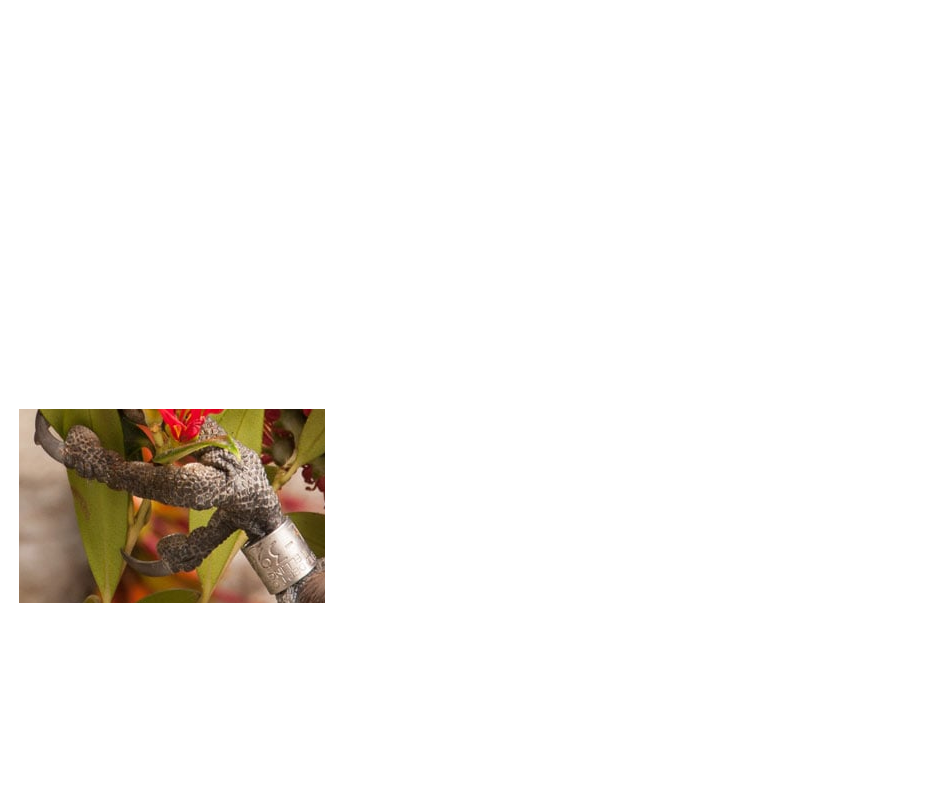
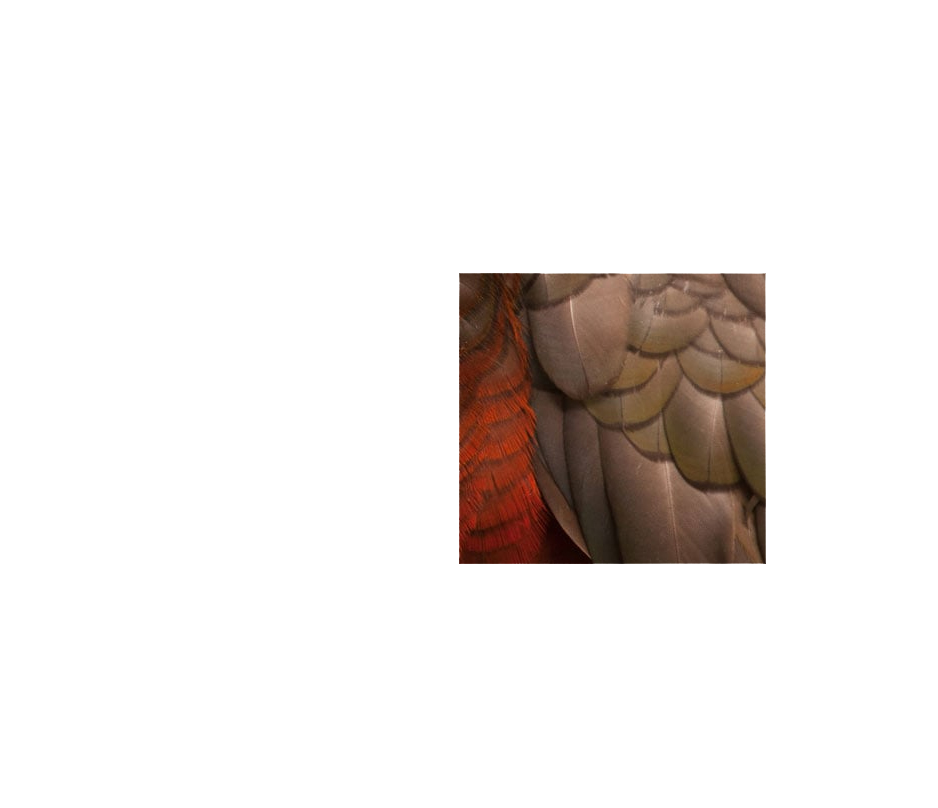

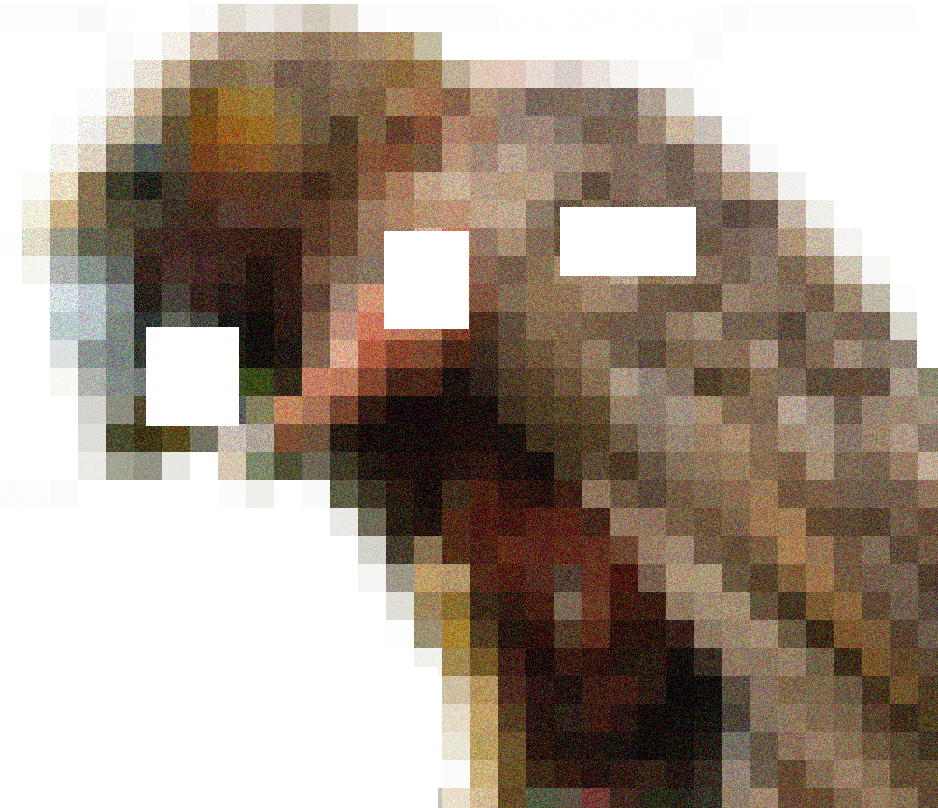
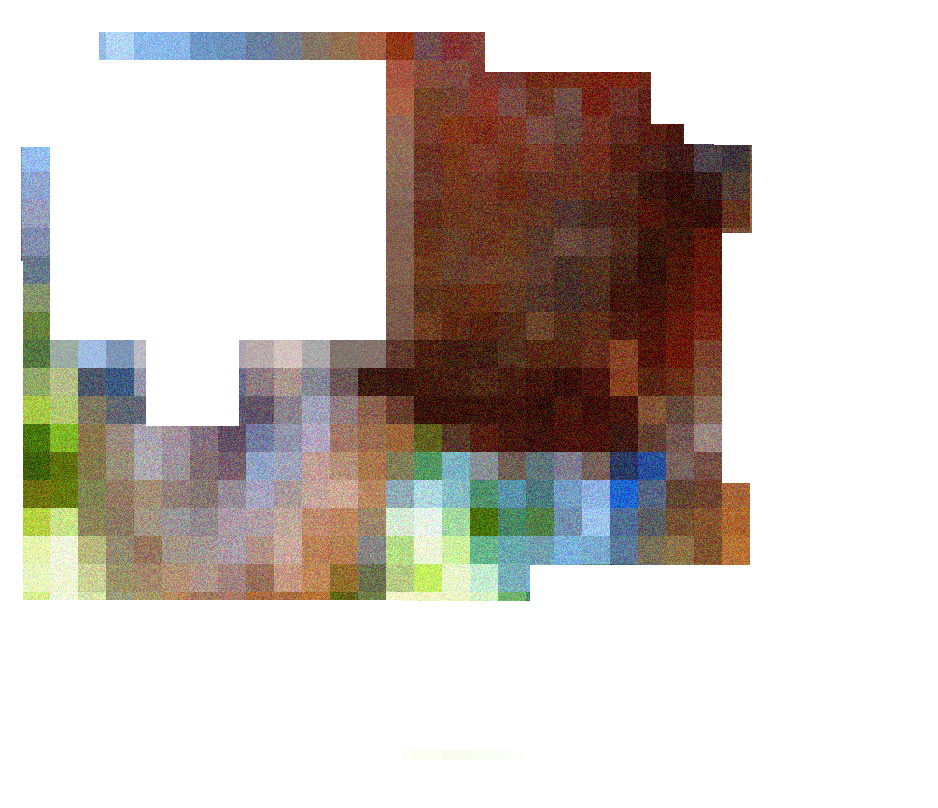
The hunt for the South Island kōkako
A video game programmer named Chris Blackbourn is working on a neural network that can label bird species based on bird calls, and is hoping to use this to help track down the elusive South Island kōkako, which was declared extinct from 2008 to 2013, when it was reclassified as ‘Data Deficient’ by the Department of Conservation. The South Island kōkako was last seen in 1967[6].
As the South Island Kookako is MIA, his algorithm is trained on North Island kōkako calls, as they sound relatively similar. It has over 400 hours of audio recordings in its dataset![9][2]
(There's a NZD$10000 bounty on this bird!)

The call of the kiwi
The Department of Conservation has commissioned the AI & data science company Qrious to create a tool that can identify Kiwi calls, and hopefully by proxy, be able to predict the local population densities of kiwi. Important to note from this particular case is the sheer volume of the dataset: “It would take 12 straight weeks, morning and night, just to listen to all 8,000 audio files”[5]. This is a common thread with many of these projects, and will be discussed in the Social Implications section.

Cacophony Project, AviaNZ, and beyond
There are others! I only have so much time in this presentation. Outside of New Zealand - the eBird citizen data study that revealed previously unseen migratory patterns of the indigo bunting (slide below, captured from WWF seminar)[10]. Back in New Zealand: both the Cacophony Project (which Chris Blackbourn works on)[4][3] and AviaNZ (which Stephen Marsland, a Vic Statistics and Mathematics professor, works on)[1] look at spectrograms of birdsong.
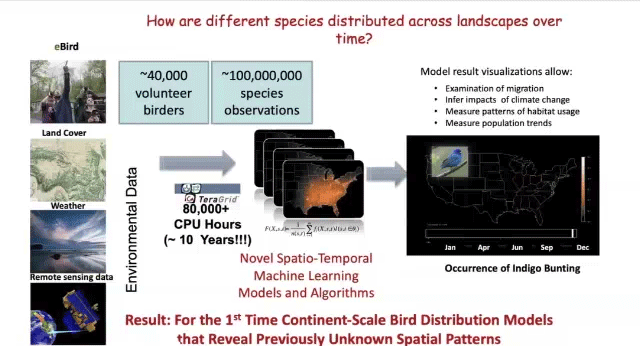
Ethical implications
There are ethical arguments both for and against AI in conservation:
- It can be argued that we have an ethical obligation to use AI in conservation; the plants, animals, and land of Aotearoa are taonga, and must be protected using every tool we have available. AI is just a brand new frontier that we can utilize.
- However, it can also be utilized in ways that can be counterproductive for conservation efforts, or ultimately harmful to society as a whole, such as:
- What happens to the data afterwards? For ex: In the case of recording hundreds of hours of bush audio to locate the South Island kōkako, what happens when the recorder picks up several hours of human conversation, people that did not consent to being included in a training algorithm?
- Could your classification system eventually be sold and repurposed for identifying human voices, engaging in human surveillance?
Social implications
- As AI is being utilized in service of taonga and on Aotearoa's land, the methods in which AI is deployed should receive consent from local iwi; we cannot forget we are deploying surveillance technology on land that often has cultural and spiritual significance, and in the context that surveilling and data-gathering have been used for authorities to harm Māori in the past. Additionally, iwi will often have knowledge of historical data about taonga that outside researchers may not necessarily be aware of; a relationship towards mutual benefit and indigenous empowerment must be considered.[7]
- Qrious's kiwi project alone represents ‘12 straight weeks’ of audio[5]. Chris Blackbourn’s kōkako neural network has over 400 hours of audio in its dataset[2]. Both projects represent >10 weeks of potential full-time paid work eliminated. By handing the analysis of countless datasets off to AI, we are eliminating both/either paid jobs or volunteer work that would have otherwise been necessary.
- Counterargument: we have no time to waste. The faster the data can be analysed, the sooner we can take informed action to protect our taonga.
Visuals of AI in the field
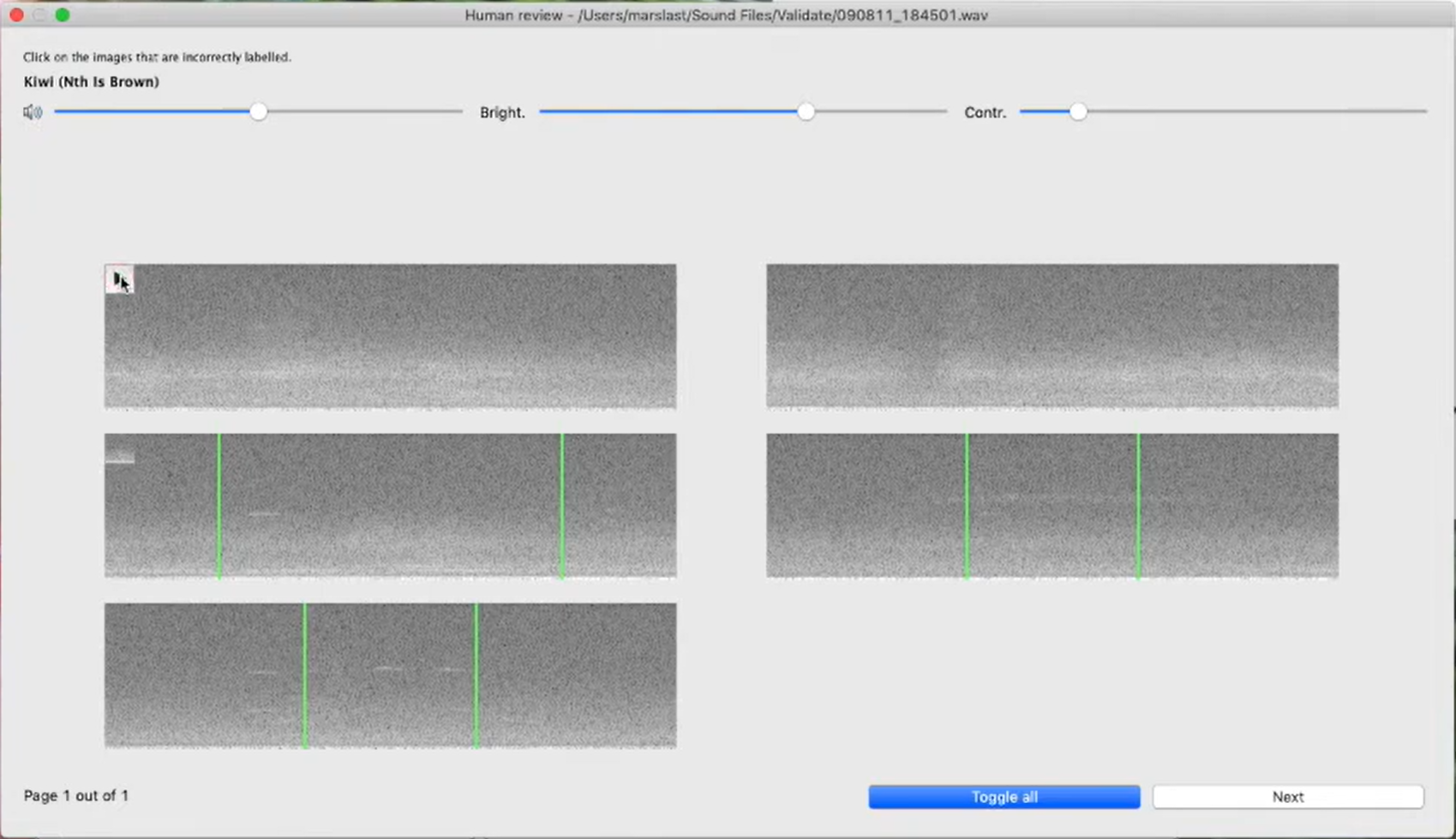 An example of AvaiNZ at work with the single species validation screen open[1].
An example of AvaiNZ at work with the single species validation screen open[1].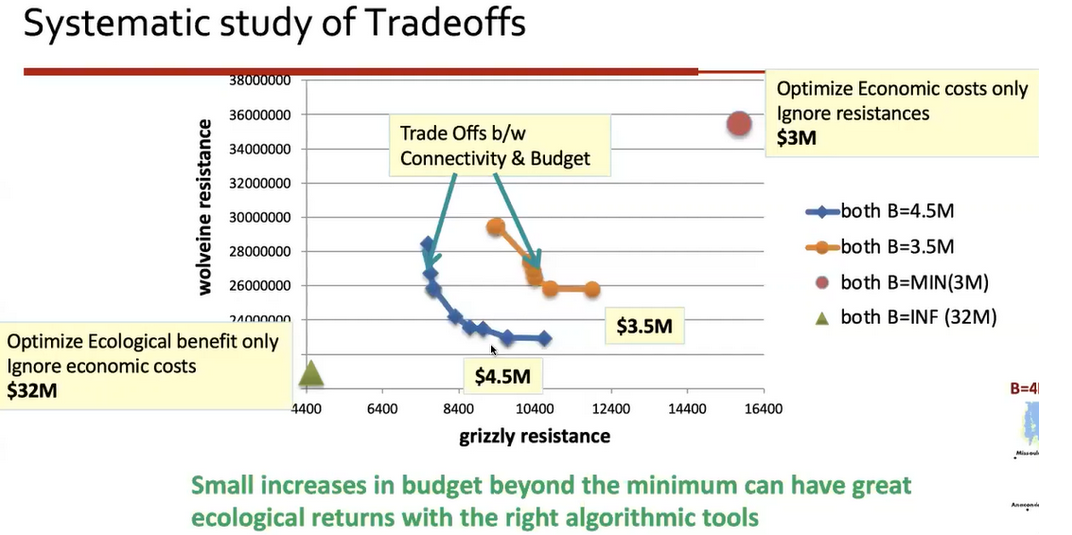 A screenshot of the AI and Conservation Fuller Seminar by Bistra Dilkinda, on a slide depicting an algorithm finding the most beneficial areas to add wildlife overpasses while taking into account both the species of concern and the limited budget[10].
A screenshot of the AI and Conservation Fuller Seminar by Bistra Dilkinda, on a slide depicting an algorithm finding the most beneficial areas to add wildlife overpasses while taking into account both the species of concern and the limited budget[10].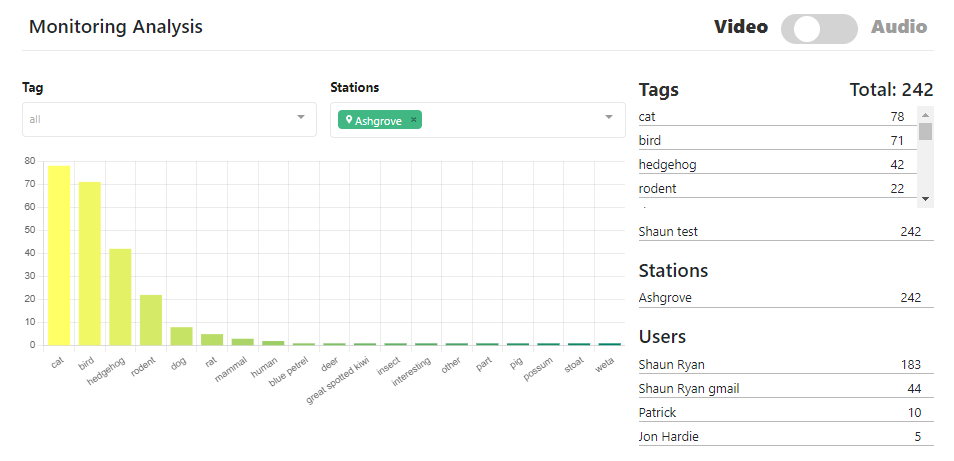 A screenshot of the Cacophony Project's Tagging Stats, which displays how many tags you or your teammates have added to the project[12].
A screenshot of the Cacophony Project's Tagging Stats, which displays how many tags you or your teammates have added to the project[12].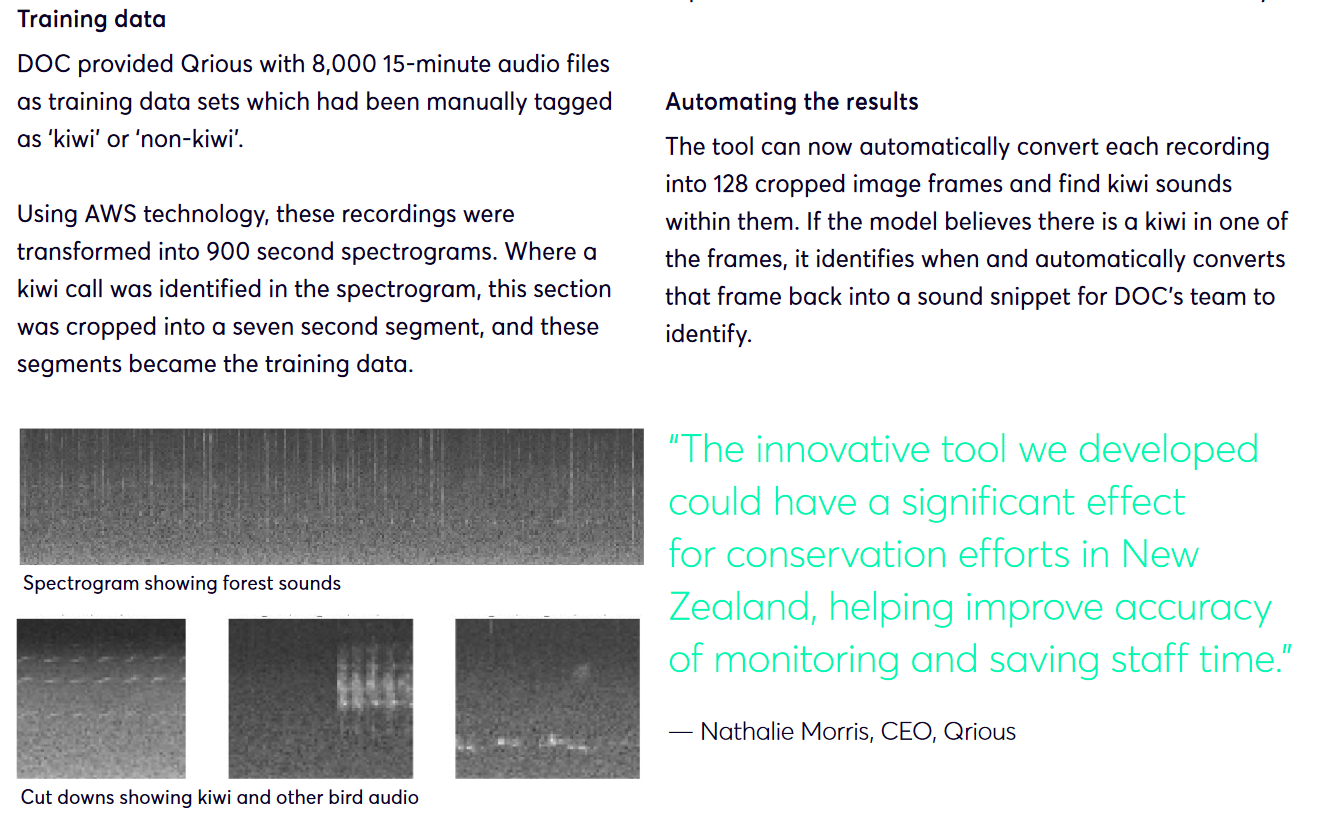 A screenshot of the Qrious Case study regarding the analysis of kiwi calls.[13]
A screenshot of the Qrious Case study regarding the analysis of kiwi calls.[13]- Avianz. AviaNZ. (n.d.). https://www.avianz.net/
- Blackbourn, C. “Missingbytes.” (2020a, January 30). "Engineering in the native forest". missingbytes. http://missingbytes.blogspot.com/2020/01/engineering-in-native-forest.html
- Blackbourn, C. “Missingbytes.” (2020b, February 23). "The Cacophony index". missingbytes. http://missingbytes.blogspot.com/2020/02/the-cacophony-index.html
- "Cacophony index is live!". The Cacophony Project. (n.d.). https://cacophony.org.nz/cacophony-index-live
- "Doc uses AI to help save the kiwi". Qrious. (n.d.). https://www.qrious.co.nz/our-work/department-of-conservation
- Gee, S. (2019, October 28). "Artificial Intelligence helps to identify South Island kōkako calls". Stuff. https://www.stuff.co.nz/environment/116615066/artificial-intelligence-helps-to-identify-south-island-kkako-calls
- "Iwi/hapū/whānau consultation". Department of Conservation. (n.d.). https://www.doc.govt.nz/get-involved/apply-for-permits/iwi-consultation/
- Marsland, S. (n.d.). "Stephen Marsland Homepage". Stephen Marsland. https://homepages.ecs.vuw.ac.nz/~marslast/index.html
- Ryan, S. (2019, October 31). "Automatic bird detection is coming". 2040. https://www.2040.co.nz/blogs/news/automatic-bird-detection-is-coming
- World Wildlife Fund. (2022). Fuller Seminar - Artificial Intelligence and Conservation. Retrieved from https://vimeo.com/759226004.
- World Wildlife Fund. (2022). Fuller Seminar - Artificial Intelligence and Conservation: Ethics. Retrieved from https://vimeo.com/771752163.
- Ryan, S. (2023, October 10). "View your tagging stats". 2040. https://www.2040.co.nz/blogs/news/view-your-tagging-stats
- Qrious. (n.d.-b). "Qrious Case Study: Using Artificial Intelligence to save the kiwi". Department of Conservation. Retrieved from https://www.qrious.co.nz/hubfs/Case%20Studies/Qrious%20case%20study_Using%20artificial%20intelligence%20to%20save%20the%20kiwi.pdf?hsLang=en-nz.
- Green, K. (2021, November 5). "Purpose-built facial recognition software aims to identify individual kākā". Stuff. https://www.stuff.co.nz/environment/126898710/purposebuilt-facial-recognition-software-aims-to-identify-individual-kk.